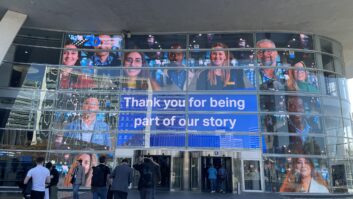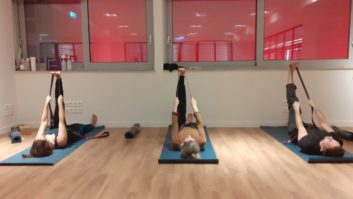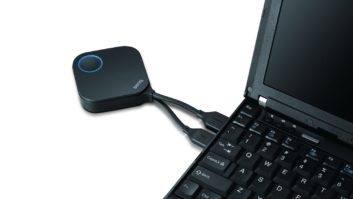It’s difficult to envisage that the education sector would face such a change in less
than 12 months, with a move to virtual teaching and learning as a direct result of
the pandemic. Many questions had to be
asked: do we have the technology needed
to deal with this sea change in teaching and learning? Is the technology a viable long-term solution? Can we ensure the same
level of teaching standards for both faculty and students?
The speed in which the virus took hold meant many educational institutions simply weren’t prepared adequately enough to meet the new health regulations on social distancing and to deliver academic-to-student learning within a safe environment.
Educational facilities needed to face the challenges head-on and plan, design and deploy new systems capable of delivering the learning experience needed in a very short space of time. Students were also faced with the prospect of using their own devices on a daily basis, and while the BYOD trend continues to rise, many had to consider investing in better devices to transition to remote learning.
Running parallel to this was also the
need for technology that could not only communicate lessons via online modules and virtual collaboration tools but offered
a superior video conferencing solution
away from the immediate choice of utilising social media platforms as a means of
delivering learning, which were simply
not up to standard.
An elegant solution for the student journey
The response was a patchwork of solutions to ‘just get the job done’ in the short term without much focus on the student experience. This soon led to the realisation that these short-term fixes were detrimental to the learning journey, with both academics and students tired and frustrated at AV systems that were inadequate for purpose.
Faculty heads and administrators needed to re-think strategy and many
took the opportunity through the summer months to migrate lectures online ahead
of classrooms reopening and lessons taking place again.
In some instances, educational institutions had to start from scratch, investing in new AV systems fit for purpose, redesigning classroom layouts and thinking about AV systems that not only offered better audio clarity within the classroom, but also for students collaborating remotely and working on online modules.
Classrooms, for the most part, are designed to provide line of sight to the teacher from all seating positions, however, AV equipment was usually not part of the design considerations. Along with the room acoustics, this is one of the many initial challenges that an integrator has to deal with when first scoping a project.
There is a lot more required from an AV system now than a ‘traditional’ system that would have been in operation only a few years ago. Flexibility, reliability, and an intuitive interface are all key requirements, along with superior audio quality. The ability to amplify the voice in a natural, effective manner from participants sat socially distanced from each other in a large room, plus engage with students who may be collaborating remotely with intelligible, crystal clear audio, has not only helped meet health guidelines implemented post-pandemic, but revolutionised the way lessons are now communicated, creating a much more balanced, comfortable learning experience for both student and academic.
There seems to be a hybrid model whereby collaborative and active learning is rising, but there is also a trend to have flexible, easy to use systems in place that can meet daily challenges quickly and efficiently. As a short-term measure, remote learning continues to work. But it has quickly become clear that shortfalls in audio quality are having a negative impact on the learning experience.
Scalable solutions have been a key request with a focus on maintaining and exceeding teaching standards. For those academic institutions competing to attract new students, the offer of remote learning and lecture capture is seen as essential, but only if it’s inclusive and educationally advantageous.
Zoom, Microsoft Teams and a host
of other video conferencing platforms
were also now an essential tool in order to keep lessons on track; platforms that just 12 months earlier had been the reserve
of the corporate world but were now
being utilised by educational institutions
on a global scale.
The convergence between AV and IT departments has been well documented, however there was now a renewed focus as both sets of professionals worked together to provide efficient, flexible AV solutions needed to offer students the best possible environment for them to progress with their learning journey, designing and creating classrooms and lecture theatre environments with smaller groups of students in a socially distanced configuration.
By drawing on their shared experiences and knowledge, and working alongside specialist AV integrators, AV systems were created to meet and exceed requirements, enabling an inclusive experience, effortlessly connecting both faculty and students with each other and their classes with high-quality audio, for both domestic and international students. The plus side to this investment also meant cutting-edge video conferencing technology could now be implemented more widely within the educational environment.
Future-proofing the learning experience
Without doubt, we’re seeing a revolution in education. Flexible learning solutions will become the norm and remote learning is here to stay. Whether it’s a teacher lecturing remote students, students in a classroom listening to an instructor from a satellite location, or lecture capture for later viewing, the audio quality of these applications is crucial to ensure learning excellence for each student.
Discussion is an essential element of most course content and a remote lecture with poor audio quality is not good enough. The questions and student discussions in class can also support comprehension of complex topics. Audio clarity is vital. Each participant should be able to speak with and hear everyone else, requiring full room coverage and clear audio processing. This is especially relevant in the now-familiar hybrid learning scenario of students both in the room with a professor and watching remotely on the far end of a video conference call.
Shure.com/education







